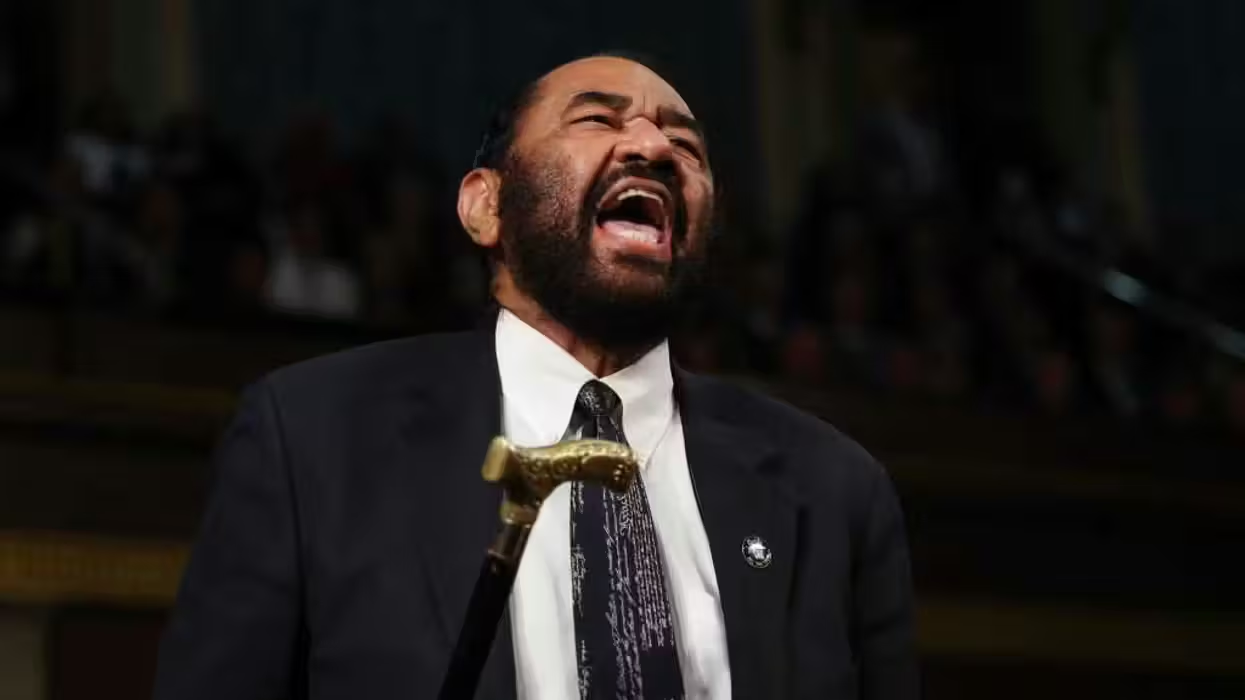
© 2025 Blaze Media LLC. All rights reserved.
He Was Researching the Decline of Churches in America and Noticed a Parallel That Truly Stunned Him
April 28, 2016
"One [church] ... saw its attendance drop from around 900 to about 30."
A ministry expert who has spent years studying churches and who recently produced a documentary about the overall decline of congregations in America said that he was shocked to uncover a parallel between what has happened to a well-known American business and to American Christianity more broadly.
Thom Schultz, CEO of Group Publishing and director of the film "When God Left the Building," recently told The Church Boys podcast that he noticed some stunning comparisons between the paths of the Eastman Kodak Company and the collective Christian church.
"We wound up, during the course of making the film, running into the example of what happened to another big American institution — not the church, but in this case the Eastman Kodak company," Schultz said. "That story of the rise and fall of Kodak that we dug into had so many parallels to what's happening in the church that it just stunned us."
The director said that his team located the chief engineer at Kodak during the time in which digital photography emerged, explaining how the company's purported handling of that technology directly led to its decline in pertinence.
"He witnessed firsthand how that company tried to sideline and put on the back shelf digital photography, hoping that their legacy business [of] film and paper and chemicals would continue," Schultz said, explaining that the engineer detailed the company's decisions over time — choices and moves that the filmmaker said are reminiscent to what's happening inside churches today.
Listen to Schultz discuss the decline of churches at the 31:00-mark below:
Summarizing his findings, Schultz — who has spent years examining church trends — said that "the church today in America is in decline," going on to state that 80 percent of houses of worship are either stuck where they are dwindling.
That's why he and his film team embarked on the film "When God Left the Building," as they sought to understand what is driving the decline. Overall, Schultz spent three or four years working on the movie, detailing just one of the churches that he tracked during that time.
"We followed different churches— one, in particular, in upstate New York that saw its attendance drop from around 900 to about 30," he said. "We were able to follow just a collapse that happened before our eyes."
In that particular instance, Schultz said that the decline came as a result of a variety of factors, including internal strife, a loss of mission and other "really petty stuff."
"They really just lost their love, their first love of why they were a church in the first place." he said, citing just one example of the disfunction. "Many of the church members were really upset when the pastor took down pictures of past dead pastors."
Speaking more generally, Schultz said that the problem of church decline is one that is being experienced across the board, and offered up a theory about a potential cause: the delivery mechanism that is being used to spread the Christian gospel.
He contended that, as times have changed, the traditional delivery mechanism is no longer as effective as it once was. Rather than a decrease in interest in faith, he said that there are simply fewer people who are hearing Christian messages due to the delivery mode.
"We've got to step back and take a look at, 'Well, how are we doing with that delivery mechanism with the message?'" he said. "I think that rather than hand wringing about how society is less interested in spiritual things — which i don't believe is the case."
Schultz believes that a more "interactive model" that is reflective of other educational realms in today's society would help to curb the divide, explaining that many young people no longer want to hear from one expert or authority at a microphone and are looking for participatory opportunities.
"Education today in schools are turning more and more to participative learning and interactive learning," he said. "If we can figure out how to reform what we do in church ... to a more interactive model, that's one step toward re-engaging and appealing to young people today."
As TheBlaze previously reported, a Pew Research Center report released last May found a rise in the proportion of Americans who are not affiliated with a specific religion, with a substantial decline in the overall proportion of self-identified Christians.
The United States remains a majority Christian country, with 70.6 percent falling under the Bible-based umbrella in 2014. This is a decrease of eight percentage points, though, from 2007 when the study found that 78.4 percent of the nation embraced Christianity.
Based on margins of error, Christianity lost between 2.8 and 7.8 million followers over the past seven years, with the largest drop observed within mainline Protestantism, a group of denominations known for embracing more theologically progressive ideals.
Also, the proportion of people who are either atheist, agnostic or are simply disconnected from a specific faith increased from 16.1 percent in 2007 to 22.8 percent in 2014.
--
Front page image via Shutterstock.com.
--
Follow the author of this story on Twitter and Facebook:
Want to leave a tip?
We answer to you. Help keep our content free of advertisers and big tech censorship by leaving a tip today.
Want to join the conversation?
Already a subscriber?
Billy Hallowell is a digital TV host and interviewer for Faithwire and CBN News and the co-host of CBN’s "Quick Start Podcast."
Billy Hallowell
Billy Hallowell is a digital TV host and interviewer for Faithwire and CBN News and the co-host of CBN’s "Quick Start Podcast."
more stories
Sign up for the Blaze newsletter
By signing up, you agree to our Privacy Policy and Terms of Use, and agree to receive content that may sometimes include advertisements. You may opt out at any time.
Related Content
© 2025 Blaze Media LLC. All rights reserved.
Get the stories that matter most delivered directly to your inbox.
By signing up, you agree to our Privacy Policy and Terms of Use, and agree to receive content that may sometimes include advertisements. You may opt out at any time.






